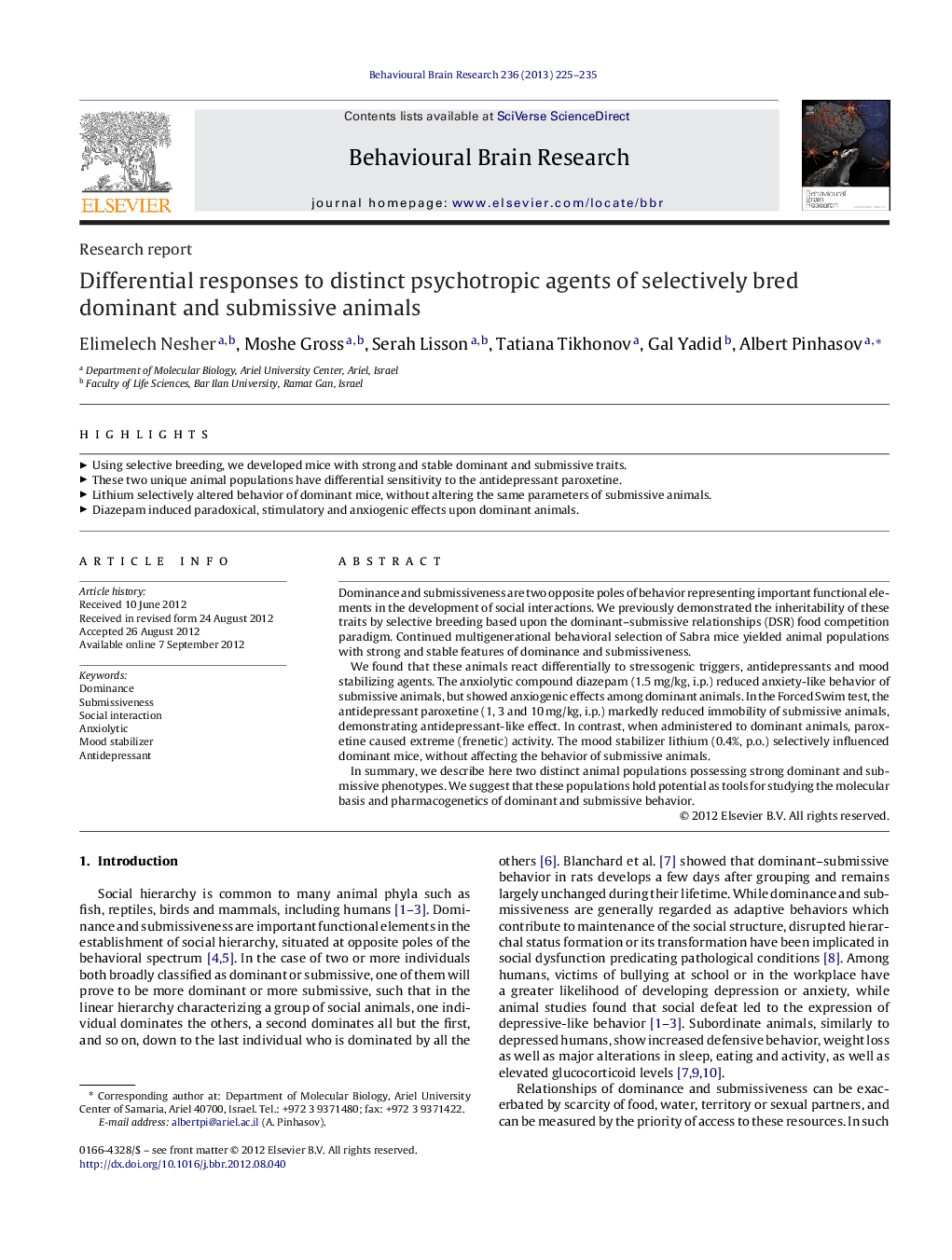| Article ID | Journal | Published Year | Pages | File Type |
|---|---|---|---|---|
| 6259478 | Behavioural Brain Research | 2013 | 11 Pages |
Dominance and submissiveness are two opposite poles of behavior representing important functional elements in the development of social interactions. We previously demonstrated the inheritability of these traits by selective breeding based upon the dominant-submissive relationships (DSR) food competition paradigm. Continued multigenerational behavioral selection of Sabra mice yielded animal populations with strong and stable features of dominance and submissiveness.We found that these animals react differentially to stressogenic triggers, antidepressants and mood stabilizing agents. The anxiolytic compound diazepam (1.5Â mg/kg, i.p.) reduced anxiety-like behavior of submissive animals, but showed anxiogenic effects among dominant animals. In the Forced Swim test, the antidepressant paroxetine (1, 3 and 10Â mg/kg, i.p.) markedly reduced immobility of submissive animals, demonstrating antidepressant-like effect. In contrast, when administered to dominant animals, paroxetine caused extreme (frenetic) activity. The mood stabilizer lithium (0.4%, p.o.) selectively influenced dominant mice, without affecting the behavior of submissive animals.In summary, we describe here two distinct animal populations possessing strong dominant and submissive phenotypes. We suggest that these populations hold potential as tools for studying the molecular basis and pharmacogenetics of dominant and submissive behavior.
⺠Using selective breeding, we developed mice with strong and stable dominant and submissive traits. ⺠These two unique animal populations have differential sensitivity to the antidepressant paroxetine. ⺠Lithium selectively altered behavior of dominant mice, without altering the same parameters of submissive animals. ⺠Diazepam induced paradoxical, stimulatory and anxiogenic effects upon dominant animals.
